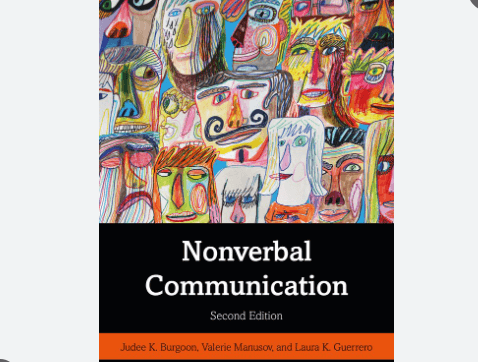Organizational Communication

- Article's photo | Credit Nexford University
Mastering the Art of Organizational Communication: A Comprehensive Overview
Introduction:
In the dynamic realm of modern business, where success hinges on collaboration, innovation, and adaptability, organizational communication emerges as the cornerstone that shapes the destiny of enterprises. This blog post endeavors to provide a comprehensive overview of organizational communication, encompassing a myriad of facets that contribute to its complexity and significance. From fundamental principles to advanced strategies, understanding the intricacies of organizational communication is pivotal for fostering a thriving and resilient workplace.
What is Organizational Communication?
Organizational communication is the process of exchanging information and creating meaning within an organization. It encompasses all forms of communication, both formal and informal, that take place within an organization.Organizational communication.
Organization communication is more than the exchange of messages; it is the lifeblood that courses through the veins of every successful entity. At its core, it involves the systematic process of creating, transmitting, receiving, and interpreting information within an organization.
This intricate web of interactions weaves through formal and informal channels, encompassing verbal, written, and non-verbal cues to facilitate understanding, alignment, and collaboration among organizational members. Effective organizational communication is essential for achieving organizational goals, building employee morale, and maintaining a positive organizational culture.
Key Dimensions of Organizational Communication
Internal Communication
Internal communication is the glue that binds an organization together. It involves the dissemination of information within the organizational boundaries, promoting a shared understanding of goals, values, and operational processes. Effective internal communication is the bedrock of a positive organizational culture.
External Communication
Beyond the confines of the organization, external communication extends to interactions with customers, suppliers, investors, and the broader community. Crafting a compelling external communication strategy is vital for managing the organization's reputation, fostering stakeholder relationships, and navigating the complexities of the external environment.
Formal and Informal Channels
Formal communication encompasses official channels such as reports, memos, and structured meetings. Informal communication, on the other hand, thrives through spontaneous interactions, grapevine communications, and social connections. Balancing these channels is crucial for maintaining a healthy flow of information.
Leadership Communication
Leadership communication transcends the mere transmission of information; it embodies the art of inspiring, motivating, and guiding teams. Effective leaders leverage communication to articulate a compelling vision, build trust, and cultivate a positive organizational climate.
Technological Advancements
The digital age has revolutionized organizational communication, introducing a plethora of tools and platforms such as email, video conferencing, and collaboration software. Navigating this technological landscape requires organizations to strike a balance between efficiency and potential pitfalls like information overload.
Crisis Communication
Organizational communication faces its sternest test during times of crisis. A well-crafted crisis communication plan is indispensable for managing unforeseen challenges, reassuring stakeholders, and preserving the organization's integrity.
Cross-Cultural Communication
In the era of globalized business, organizations often consist of diverse teams with members from different cultural backgrounds. Cross-cultural communication skills are crucial for fostering inclusivity, understanding, and synergy among team members.
Benefits of Organizational Communication
Effective organizational communication is important for a number of reasons, including:
Enhanced Productivity
Effective communication streamlines workflows, reduces ambiguity, and fosters a culture of efficiency. Teams that communicate well are better equipped to collaborate and achieve common goals.
Improved Employee Morale
Open and transparent communication cultivates a positive organizational culture. When employees feel heard, valued, and well-informed, morale improves, contributing to higher job satisfaction and retention rates.
Innovation and Problem-Solving
A communicative environment encourages the free flow of ideas. Teams that communicate openly are more likely to engage in brainstorming, problem-solving, and innovation, leading to continuous improvement.
Conflict Resolution
Effective communication is key to resolving conflicts. Transparent and timely communication helps address issues before they escalate, promoting a harmonious work environment.
Adaptability to Change
In a rapidly changing business landscape, organizations must adapt swiftly. Clear communication about changes in strategy, structure, or operations helps employees understand and embrace transformations.
Prescription for Effective Organizational Communication
There are a number of things that organizations can do to improve their communication practices, including:
- Developing a clear communication strategy: This strategy should identify the organization's communication goals and objectives, as well as the channels that will be used to communicate with different stakeholder groups.
- Training employees on effective communication: This training should teach employees how to communicate clearly, concisely, and persuasively.
- Using a variety of communication channels: Organizations should use a variety of communication channels to reach all of their stakeholder groups. This may include email, newsletters, social media, face-to-face meetings, and intranet sites.
- Creating a feedback loop: Organizations should create a feedback loop to ensure that their communication is effective. This may involve surveying employees, conducting focus groups, or tracking key metrics.
Conclusion
Organizational communication, in all its complexity, is the beating heart of successful enterprises. Navigating its intricate nuances involves understanding its multifaceted dimensions, embracing technological advancements, and honing interpersonal skills. As organizations continue to evolve, those that master the art of organizational communication will not only weather the storms of change but emerge as leaders in the ever-shifting landscape of the business world.
























